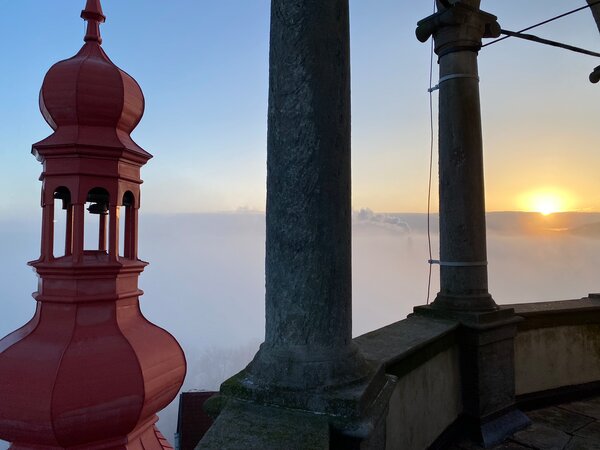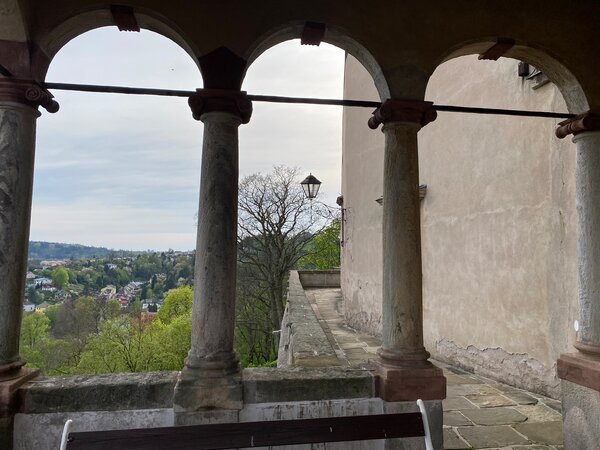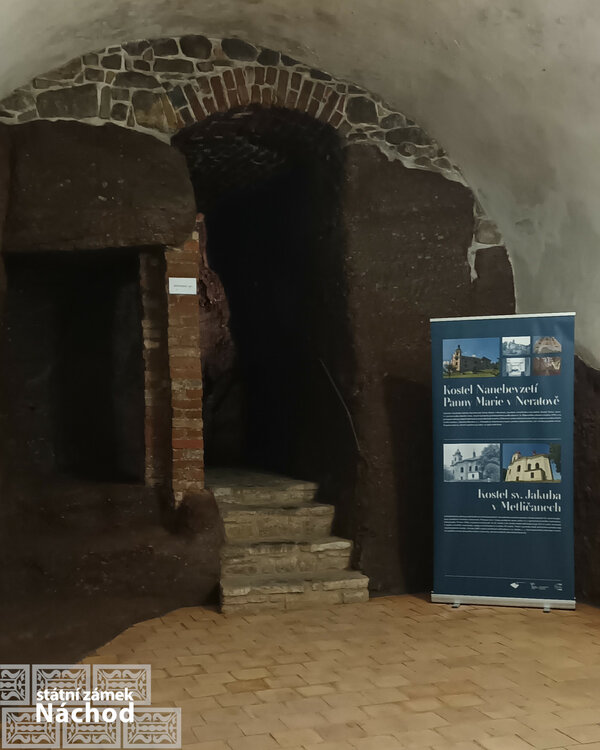The Upper Courtyard
The smallest courtyard consists mainly of a medieval tower. It is from this courtyard that the tower is accessible. The entrance was built during the Renaissance reconstruction of the building from the era of the Smiřický of Smiřice. The southern and eastern sides of the courtyard consist of arcaded galleries, which were walled up for climatic reasons during the Baroque alterations and replaced by windows. From this 'upper courtyard' other areas are accessible, some of which are open to visitors.
The most preserved part of the castle - the cylindrical tower with a gallery. It has been a dominant feature of the Náchod area since the beginning. Its function is obvious - it is the main defensive element of the castle complex. The tower was originally accessible only from the second floor, but during the Renaissance reconstructions it gained an entrance from the courtyard. During the Renaissance the tower was provided with an arched gallery (it was modified under Ottavio I Piccolomini). Both the gallery and the loopholes located directly from the gallery were used for defence. Over the centuries, the use of the tower expanded. The rooms in the tower were used to store weapons as well as food. It was also an important communication element between the castle buildings, which was used by the servants. Interestingly, there is a hunger room in the middle of the tower.

The extensive castle library is located in the castle premises, which are not yet open to the public. The Náchod library has been shaped since the Piccolomini. In the second half of the 19th century, when the estate was owned by William of Schaumburg-Lippe, the library in Náchod was united with the library in Ratibořice, which had been located in Náchod since then. Arnold Weihe-Eimke and Otto Elster were employed to manage the library and the archives at Náchod Castle, and in addition to managing the extensive collections, they also worked on the history of Náchod. While the archival materials were transferred to the archives in Zámrsk after 1945, the library is still in place and contains around 26,000 volumes. In addition to books, there are many periodicals, records and maps.


